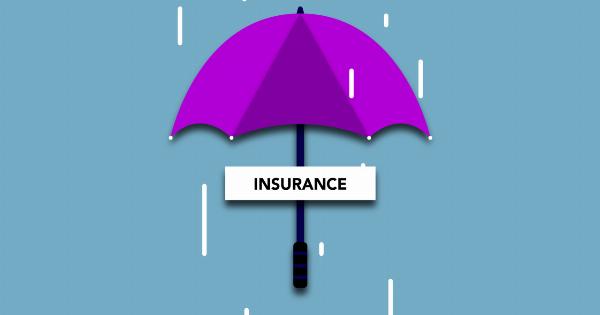Storms can be devastating, causing significant damage to homes, businesses, and infrastructure. When the storm has passed, the aftermath can be overwhelming – but having insurance coverage can provide much-needed financial protection.
In this article, we explore the importance of insuring against the aftermath of a storm and the key considerations when choosing storm insurance coverage.
Understanding the Risks
Before delving into the details of storm insurance, it is important to understand the risks associated with storms. Storms can result in various forms of damage, such as:.
- Structural Damage: High winds, heavy rain, and other storm-related elements can cause significant damage to the structures of buildings.
- Water Damage: Storms often lead to flooding, which can cause water damage to properties and possessions.
- Hail Damage: Hailstorms can cause extensive damage to roofs, windows, and vehicles.
- Power Outages: Storms can knock out power, leading to inconveniences and potential losses.
By understanding the risks associated with storms, individuals and businesses can make informed decisions about the type and level of insurance coverage they need.
Types of Storm Insurance Coverage
When it comes to insuring against storm-related damages, there are several types of policies to consider:.
1. Homeowners Insurance
Most homeowners insurance policies cover damages caused by storms, including structural damage and water damage. However, it is essential to review the policy in detail to ensure that it offers adequate coverage for storm-related risks.
Some policies may have exclusions or limitations, particularly for flood damage.
2. Flood Insurance
Traditional homeowners insurance policies typically do not cover flood damage. For individuals residing in flood-prone areas, obtaining a separate flood insurance policy is crucial.
Flood insurance covers damages resulting from rising water levels caused by storms, hurricanes, or other natural disasters.
3. Windstorm Insurance
Windstorm insurance provides coverage for damages caused by high winds during storms. This type of coverage is especially important in areas prone to hurricanes, tornadoes, or strong wind events.
Depending on the location, windstorm insurance may be included in the homeowners insurance policy or require a separate policy.
4. Business Interruption Insurance
In addition to physical damages, storms can also disrupt business operations. Business interruption insurance helps cover the financial losses incurred due to the interruption caused by a storm.
It can provide compensation for lost income, operating expenses, and even temporary relocation costs.
Choosing the Right Storm Insurance Coverage
When selecting storm insurance coverage, there are several factors to consider:.
1. Location
The location plays a significant role in determining the type and level of insurance coverage needed. Properties in coastal or flood-prone areas require comprehensive coverage that includes flood and windstorm insurance.
On the other hand, inland areas may require coverage primarily for wind-related damages.
2. Property Value
The value of the property influences the coverage limit of the insurance policy. It is essential to ensure that the coverage adequately reflects the property’s value to avoid being underinsured in the event of a storm.
3. Deductibles
Reviewing the deductibles is crucial while choosing storm insurance coverage. A deductible is the out-of-pocket amount the policyholder must pay before the insurance coverage kicks in.
Higher deductibles often result in lower premium costs but can create a larger financial burden in the event of a claim.
4. Coverage Limitations and Exclusions
Thoroughly understanding the coverage limitations and exclusions is vital before finalizing a policy. Some policies may exclude certain types of damages or have limitations on coverage amounts.
It is important to be aware of these factors and consider supplemental coverage if necessary.
5. Additional Living Expenses
If a residential property becomes uninhabitable due to storm damage, additional living expenses (ALE) coverage comes into play.
ALE coverage helps with temporary living arrangements, such as renting a home or staying in a hotel, while repairs take place. Consider whether this coverage is essential, as it can significantly impact the overall insurance cost.
Filing a Storm Insurance Claim
In the unfortunate event of storm-related damages, the following steps can help navigate the insurance claim process:.
1. Assess the Damage
As soon as it is safe to do so, assess the damages caused by the storm. Take photographs or videos to document the extent of the damage. These records can be crucial during the claims process.
2. Contact Your Insurance Provider
Contact your insurance provider as soon as possible to initiate the claim process. Provide the necessary information and documentation related to the damages.
Be prepared to answer questions and provide any additional evidence or documentation requested by the insurer.
3. Obtain Repair Estimates
Obtain multiple repair estimates from reputable contractors or professionals. These estimates will help determine the cost of repairs and serve as supporting evidence for your claim.
4. Cooperate with the Insurance Adjuster
An insurance adjuster will likely visit your property to assess the damages and validate the claim. Cooperate fully with the adjuster, providing them access to the property and any requested documentation or information.
5. Keep Detailed Records
Throughout the claim process, keep copies of all documents, emails, and receipts related to the claim. This includes communication with the insurance provider, repair invoices, and any other relevant paperwork.
Conclusion
Insuring against the aftermath of a storm is paramount to safeguarding one’s financial well-being. With appropriate storm insurance coverage, individuals and businesses can recover more swiftly from the damages caused by storms.
By understanding the risks, selecting the right coverage, and following the correct claim process, individuals can minimize the financial burden and stress associated with storm-related damages.
























